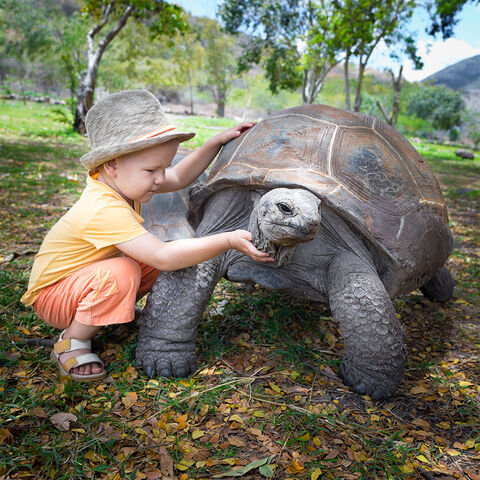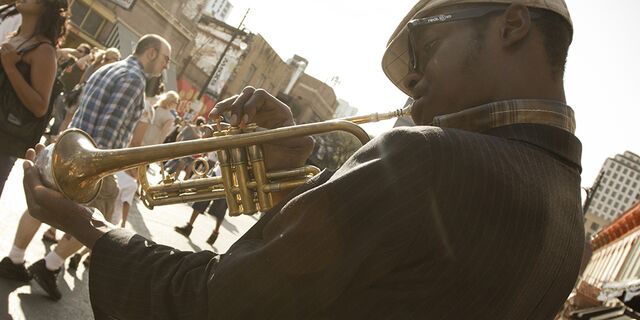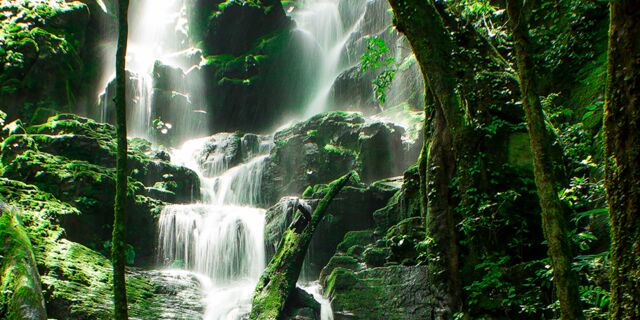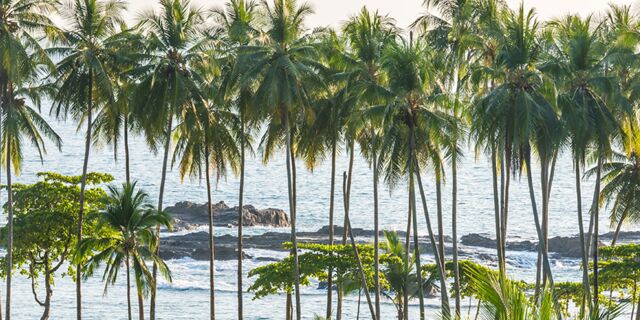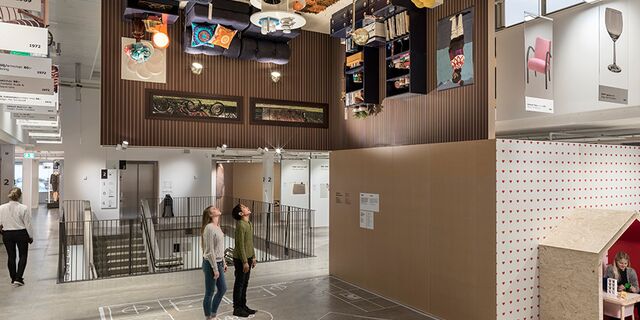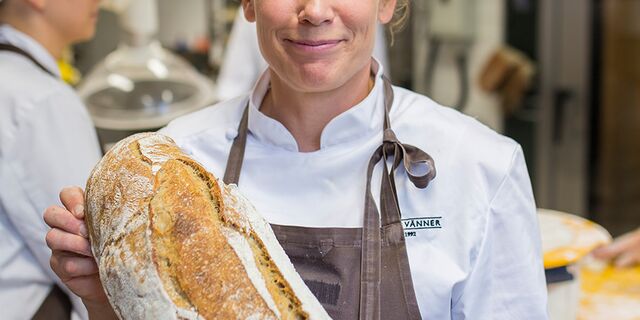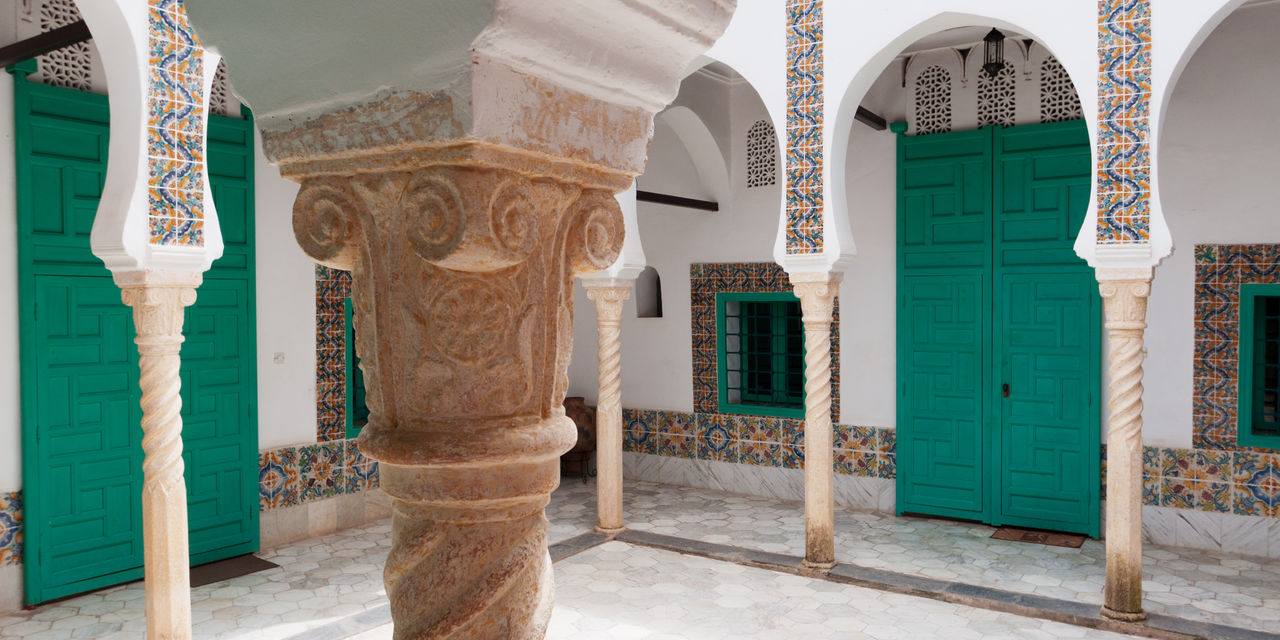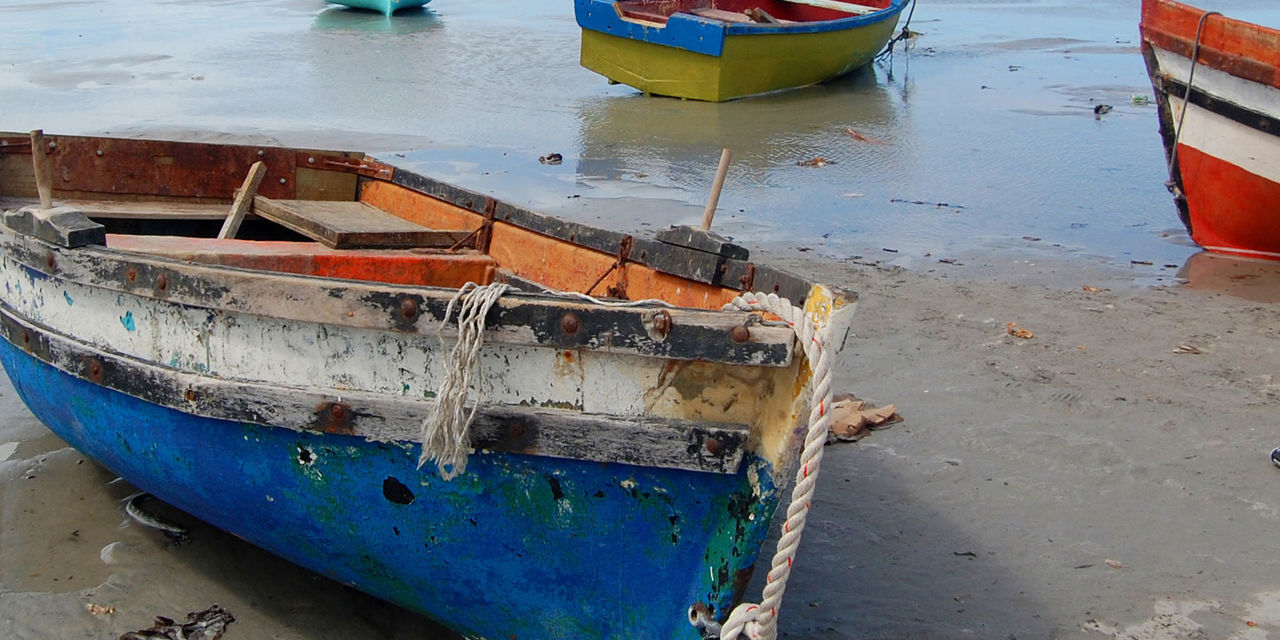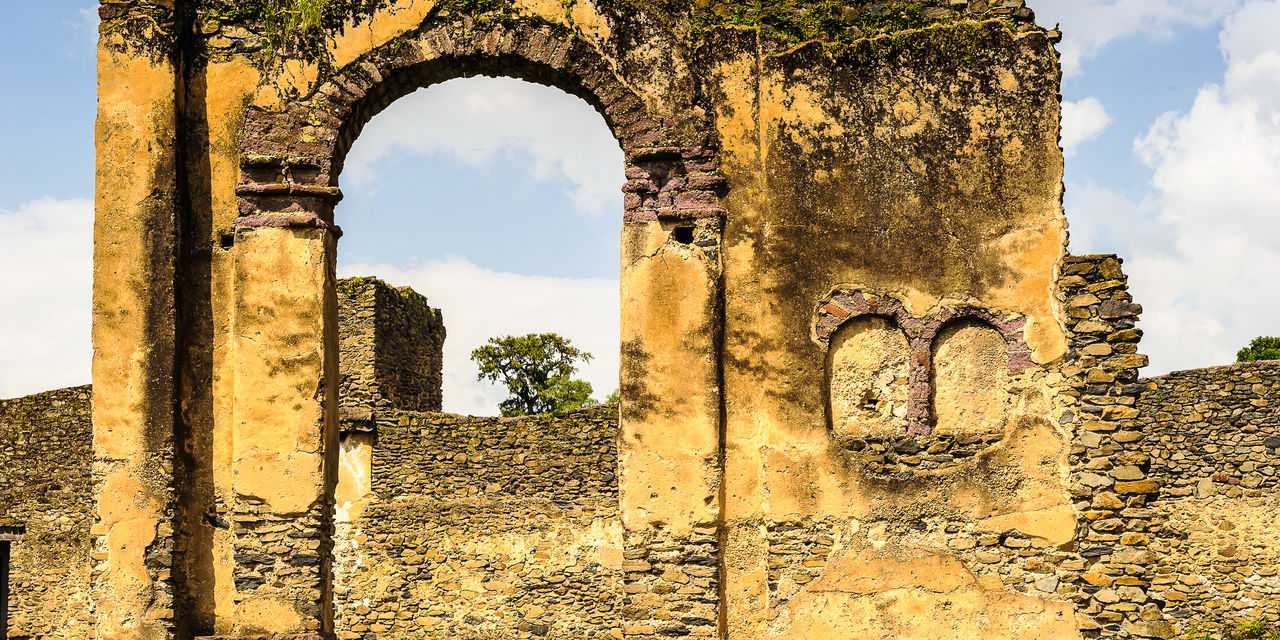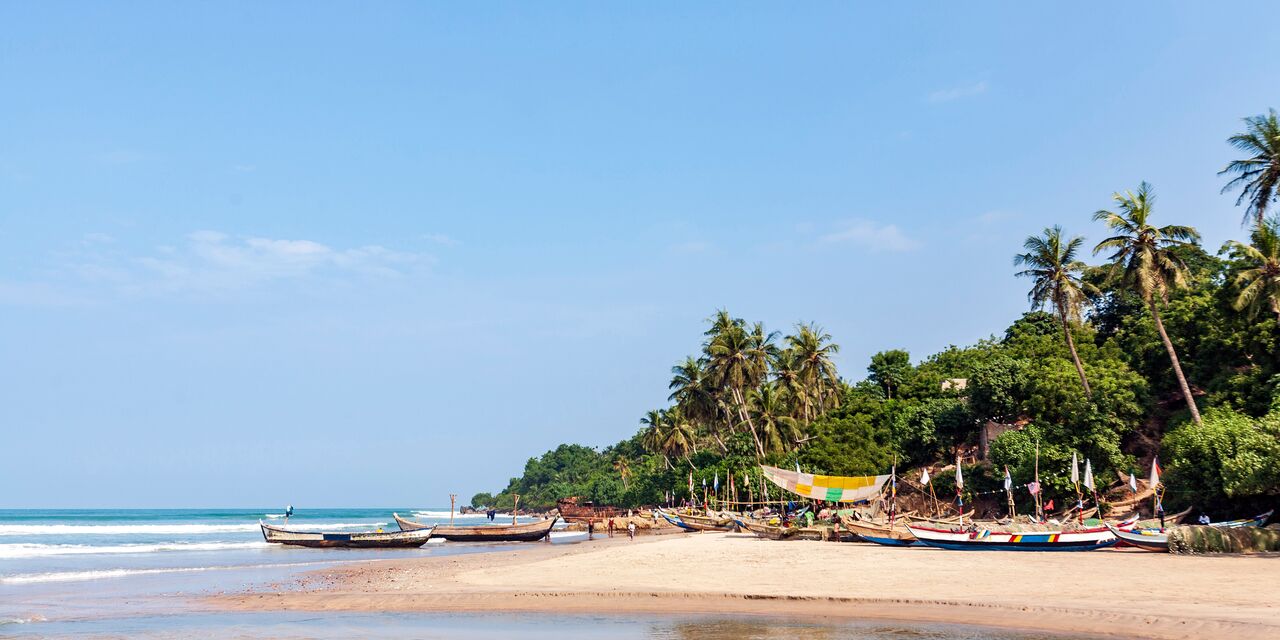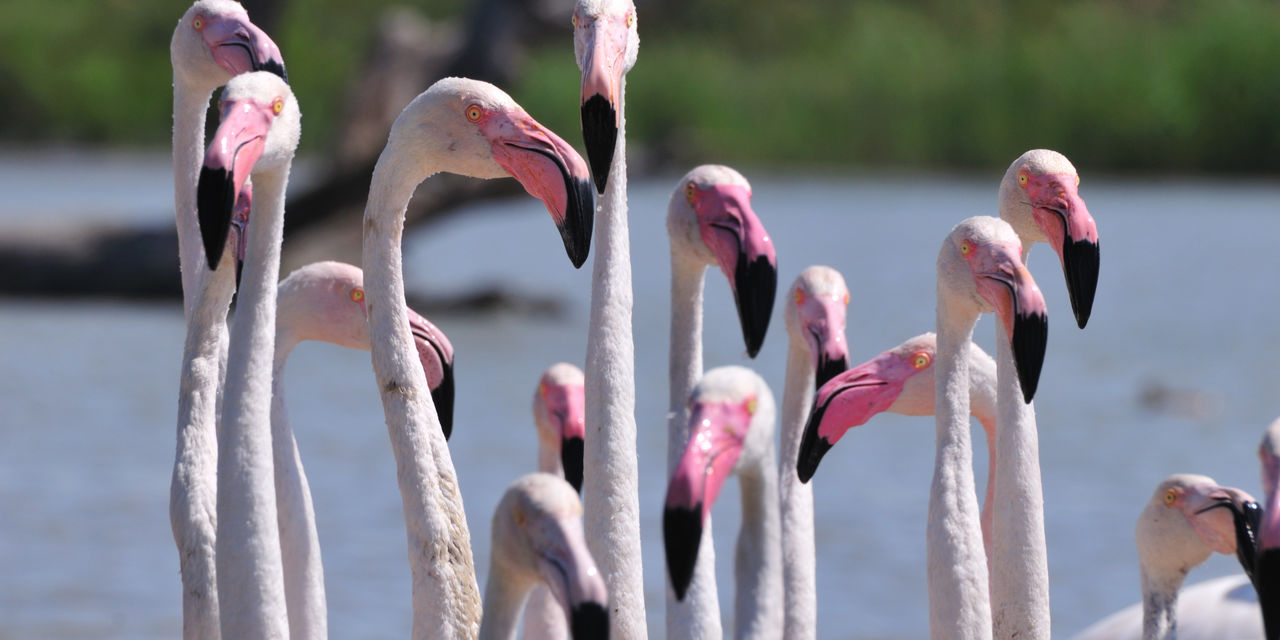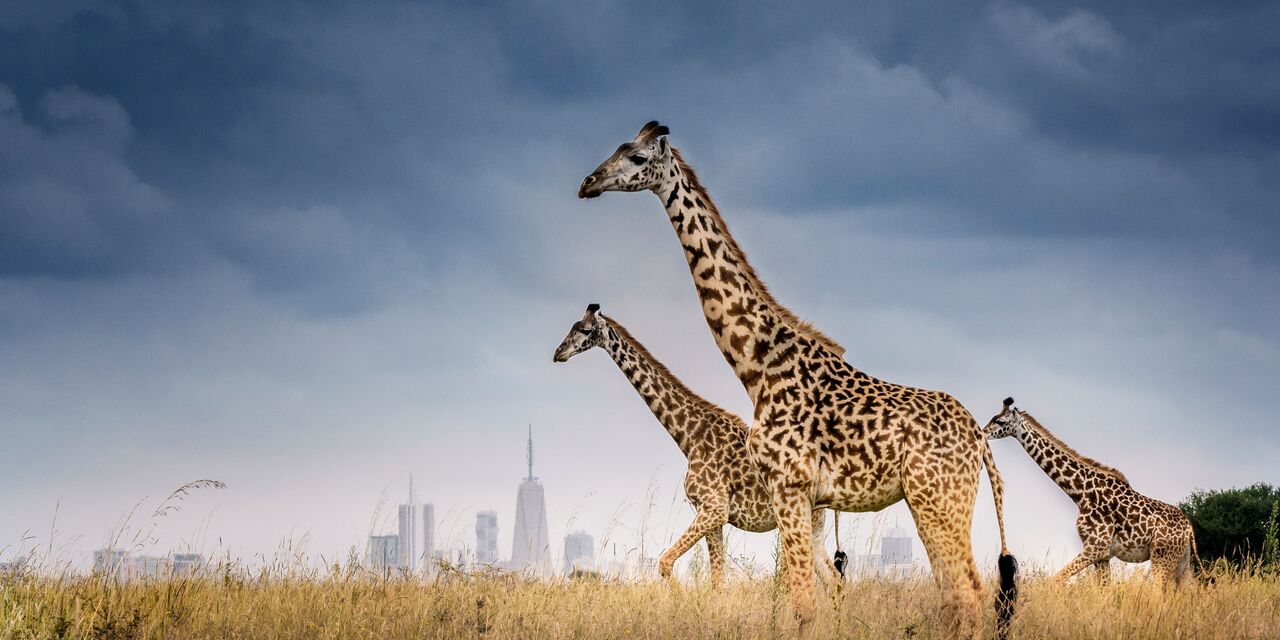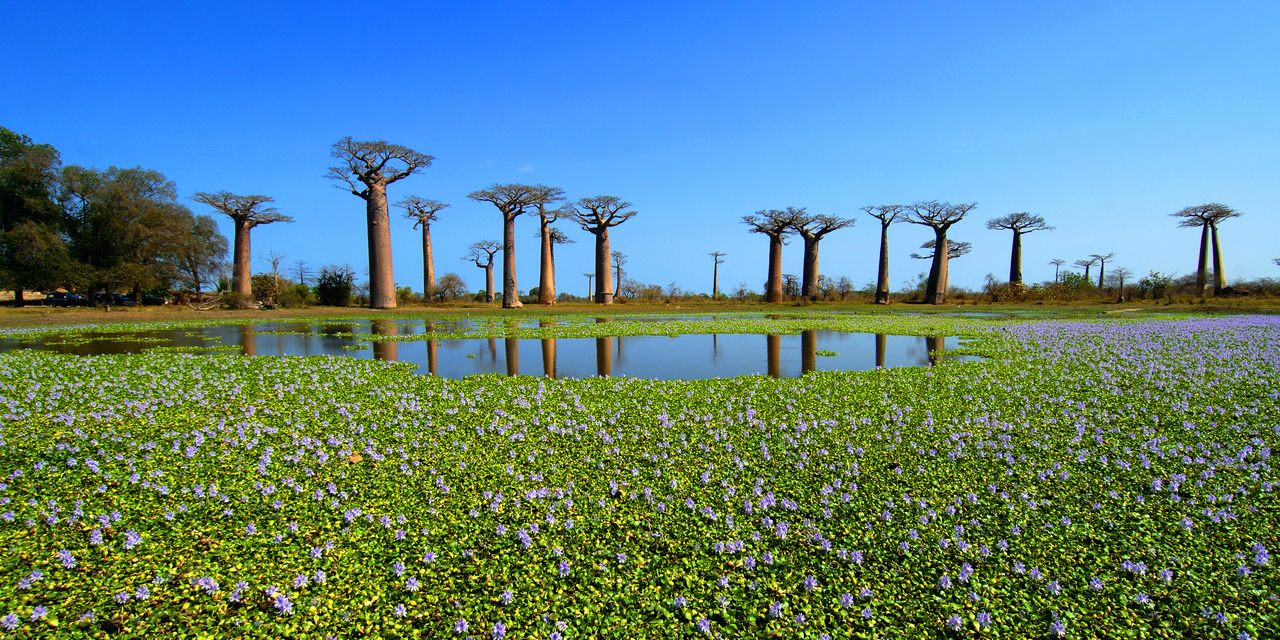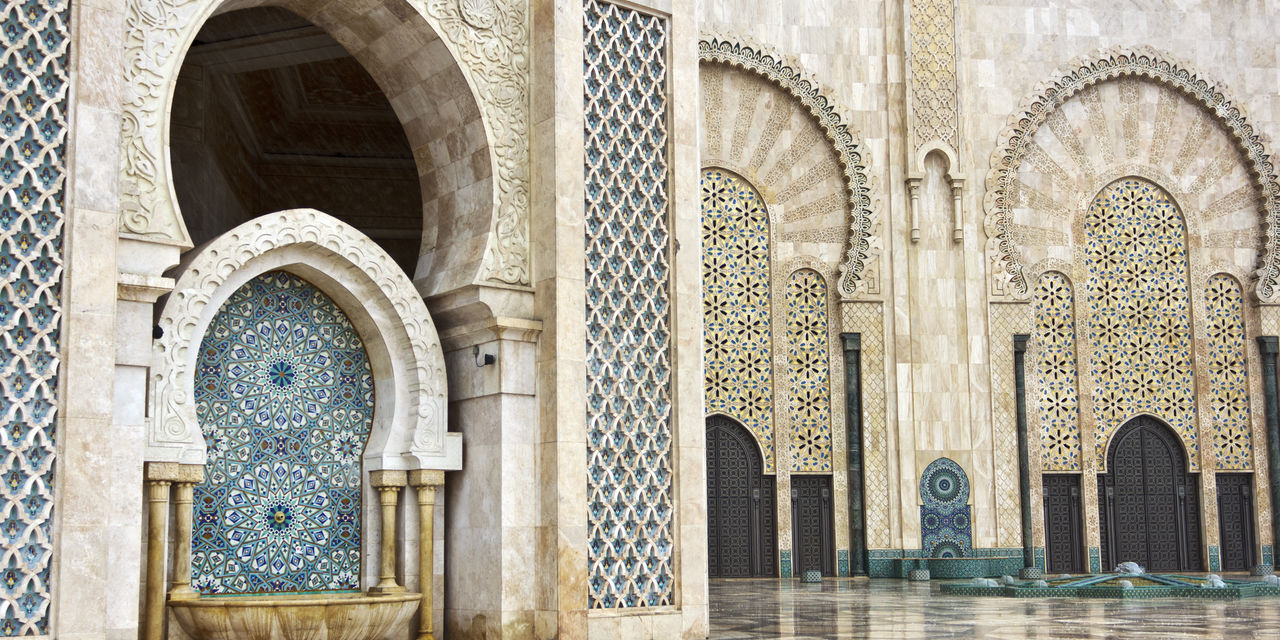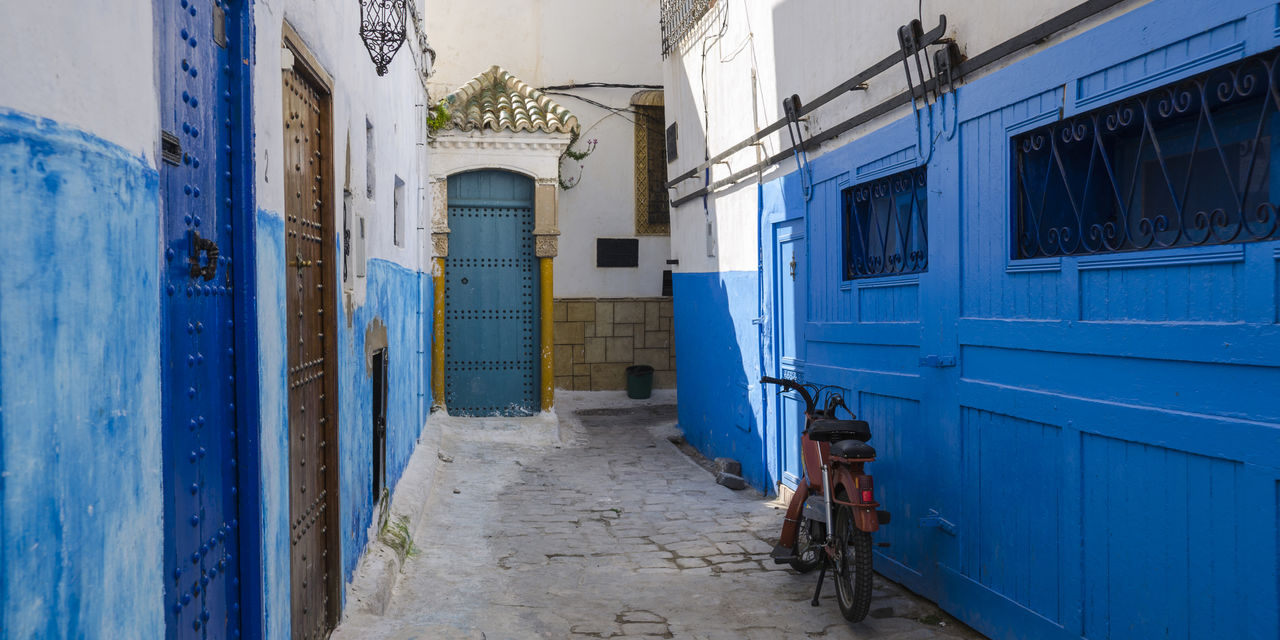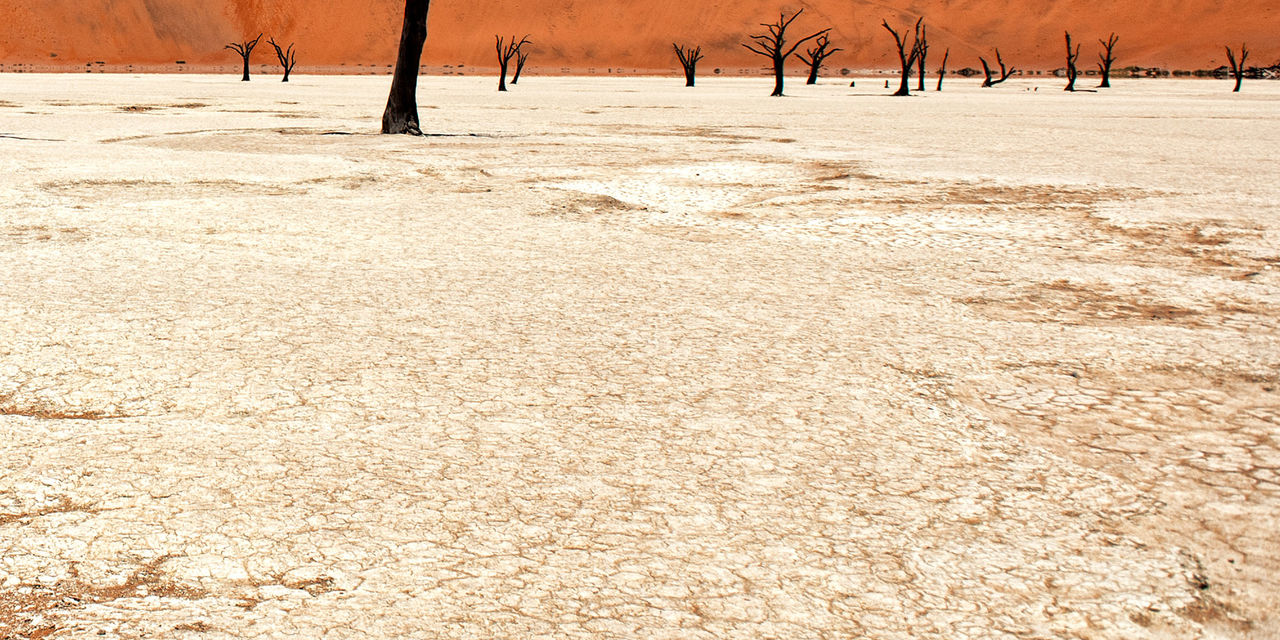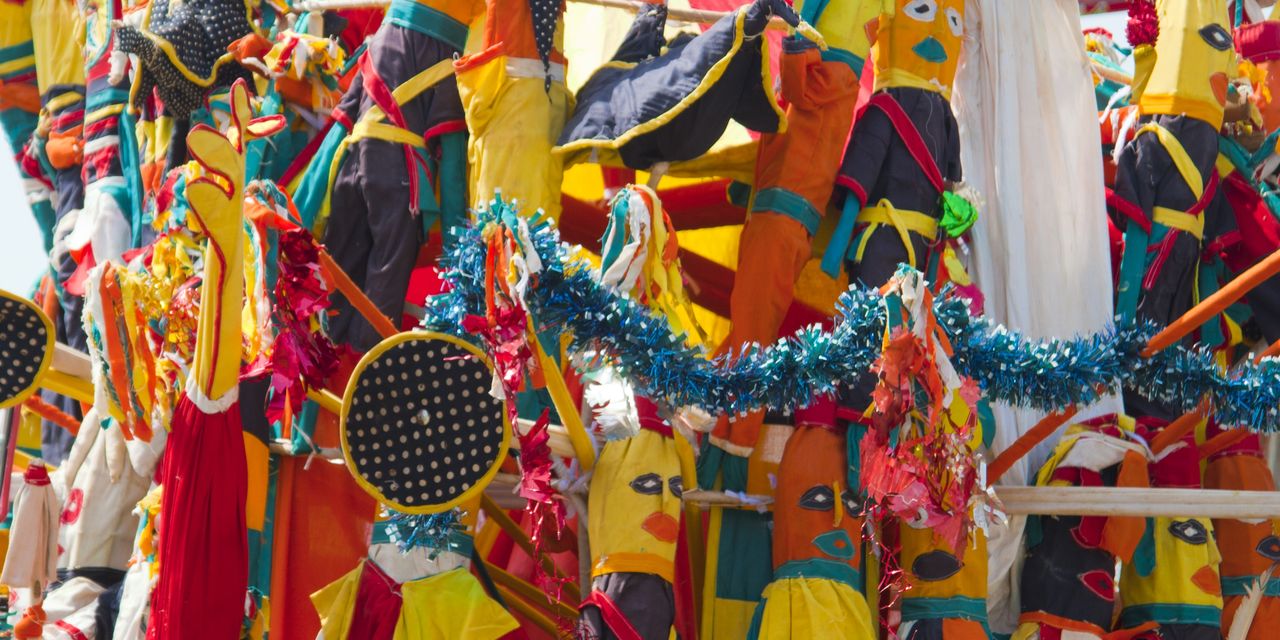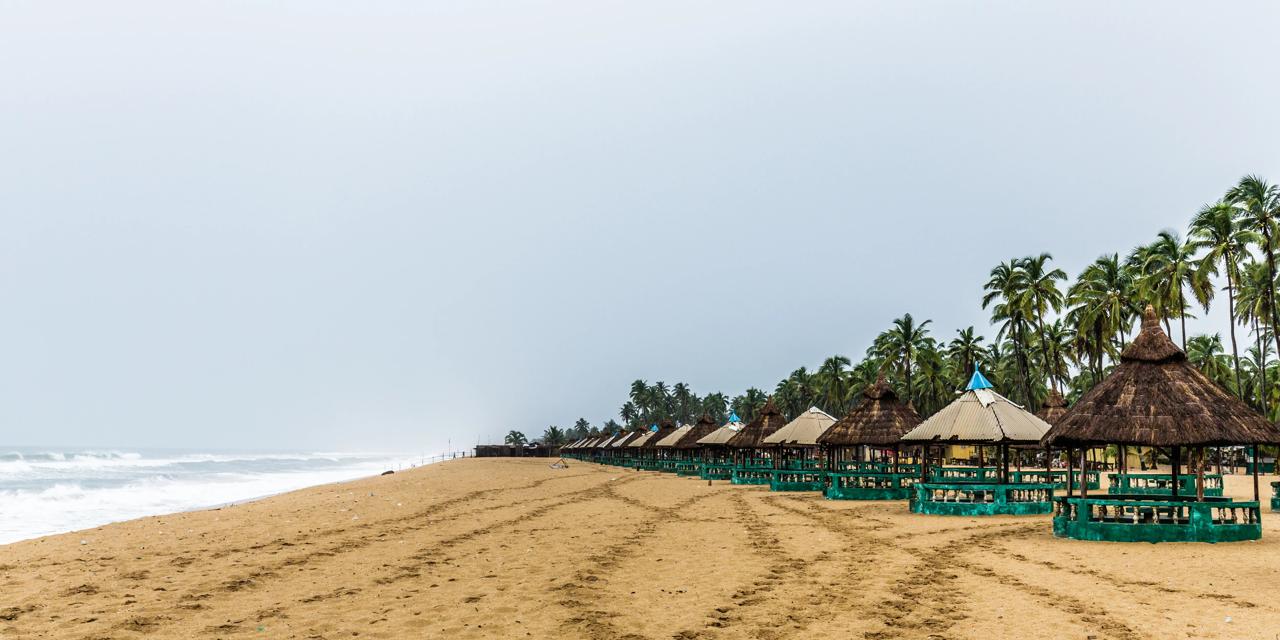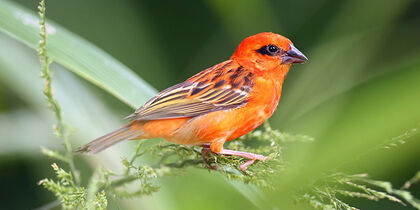
A Mauritius fody
Time capsule
A tour of the Île aux Aigrettes, a coral island off the coast of Mahébourg, gives visitors an impression of what Mauritius must have looked like when the first explorers arrived. In 1965, the entire region was declared a nature reserve and non-native plants and animals were removed as much as possible. What remains is a healthy native bird population that includes the Mauritius fody and the pink pigeon. The atoll is also home to approximately 20 Aldabra giant tortoises, including Big Daddy, a 90-year-old specimen.
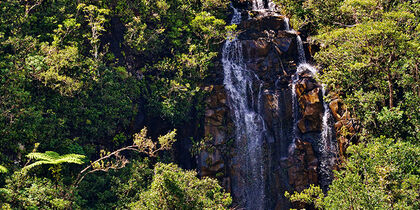
View of Alexandra Falls
The green heart of Mauritius
The Black River Gorges National Park is home to the majority of indigenous flora and fauna of Mauritius, including a population of black flying foxes, the largest indigenous mammals on the island that have a wing span of up to 80 cm. Hikers may also spot non-native deer, wild boar and macaques. The park features 60 kilometres of hiking trails with many viewpoints overlooking the green valleys, waterfalls and crater lakes. Those who don’t have the time or the energy to undertake one of the hiking routes can also take a mini road trip through the park.
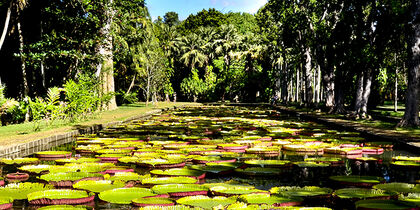
Giant water lilies in the SSR Botanical Gardens
Botanical heritage
The 282-year-old Sir Seewoosagur Ramgoolam Botanical Gardens near Pamplemousses in the interior of Mauritius are some of the most renowned botanical gardens in the world. This is not only because of their famous visitors, such as Nelson Mandela and members of the British royal family, who planted a few seedlings here. The variety of palm trees alone is impressive. But the real eye-catcher is the pond filled with Victoria amazonica water lilies: the leaves can have a diameter of up to 3 metres.

